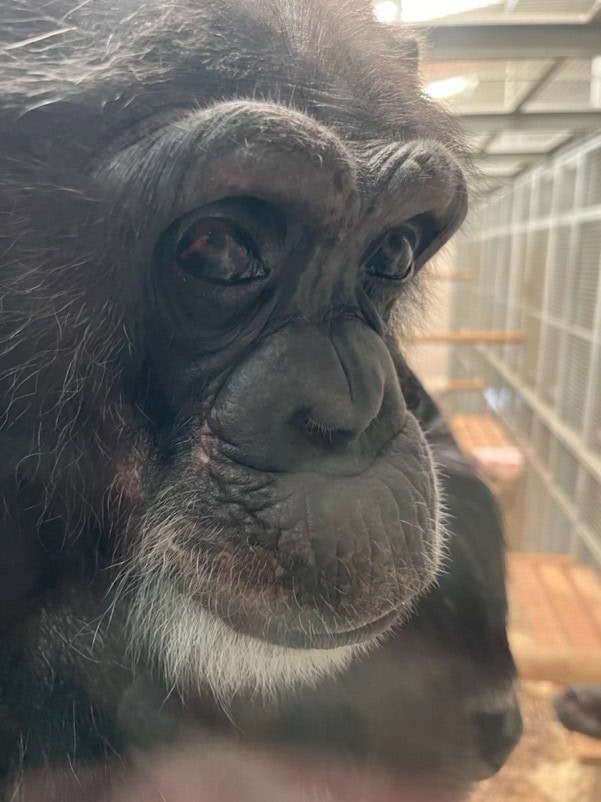I think it’s safe to say that if you visit a zoo, you aren’t really gonna be in for a quiet day. Whether it’s the lion roaring, the wolves howling, the gibbons singing or the chimps happy hooting, the park is filled with an abundance of noise. But what do they mean? What are they saying? Animals don’t necessarily speak a language like we do, but thanks to many scientists, conservationists and zoologists, we can have a good insight into what they are trying to tell us. Today, I am going to be talking about primate communication.
Communication is a well studied subject for primatologist and allows animal caregivers, conservationists, educators and other animal enthusiasts to understand how non-human primates communicate with each other and give us an indication on what they may be thinking or feeling. As humans we may not be able to fully understand everything that goes through an animals mind but we can look at ways to interpret these communication methods and make assumptions accordingly. Non-human primates may not be able to speak a language as such however they can communicate with each other through body language, vocalisations and facial expressions.
Like other animals, primates communicate to satisfy their biological and social needs, such as avoiding predators, interacting with other group members, or maintaining cohesion during travel.
Chimpanzees

Postures, gestures, facial expressions and vocalisations help Chimpanzees communicate many messages and emotions within a group. Friendly physical contact is very important with this species. As a result, social grooming is one of the most important social behaviours. Not only is it used to keep all members clean and tick free but it also solidifies hierarchal bonds and calms nervous or tense individuals. Male chimpanzees will assert their dominance by displaying, this can involve slapping their hands, stamping their feet, dragging branches and throwing rocks. By making themselves as big and dangerous as possible it will intimidate a higher-ranking individual without having to fight. Faye, who is our lowest ranking chimp here at the park, is our most expressive chimp in the group and it’s quite easy for us keepers to know how she is feeling.
Lemurs
Now when people think of asserting dominance in primates, generally their first thoughts are biting, scratching, rough and tumble. But this isn’t the case for our Ring-Tailed Lemurs. A strange and unique way that male lemurs assert their dominance is something called a “stink fight”! Sounds strange I know but hear me out! Stink fighting involves the secretion of smelly pheromones through the scent glands on their wrists. The male will then rub his tail between his wrists and chest and then proceeds to wave his tail through the air to distribute the smell. This all continues until one lemur decided enough is enough and walks away, accepting defeat.

Gibbons

I think it is safe to say our gibbons at WWP have a lot to say and there are not many animal that can compete with the song of a gibbon. Both males and females can perform a “gibbon song” both sounding very different and can be heard several miles away. Males and females will join together and sing complex duets. Males generally follow a females call or sing in between calls. A duet takes a lot of practice and can indicate to other gibbons how long a pair have been bonded together.
If a female is not mated then she will usually wait until mid-morning to perform her singing session. These sessions are much shorter than a males but are still very impressive. Whilst performing the call they will be quite physical, usually swinging between the tallest trees. Males singing bouts tend to be dependant on the density of the surrounding population and are used to alert other gibbons of their presence.
Goeldi’s Monkeys
This species of primate is highly sociable and have a diverse repertoire of communication techniques. Olfactory (scent), vocalisation, body language and facial expressions all make up a Goeldi’s Monkeys communication method. They will scent mark their territory with urine and secretions. They will participate in genital marking and sternal (upper chest) rubbing for olfactory communication. Body language, such as grooming, mating, piloerection (open mouth, arched posture, raised hair which is a display of aggression). These monkeys have around 40 different vocalisations which are used to communicate with each other. Alarm calls come in waves of three sweeps and warning calls are trill screeches. Agonists calls have a wide variance based on the level of aggression.

So next time you visit the zoo, listen, watch and learn about all the communication techniques these wonderful animals use to help you understand these amazing species.
By Holly, Deputy Head of Primates


